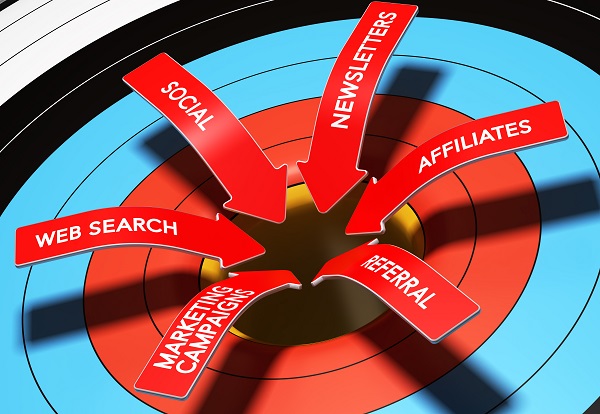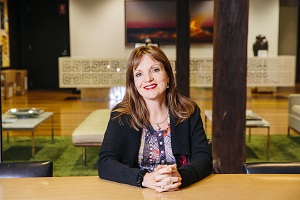
Get with the times: customer service
A hotel can have all the bells and whistles and yet fail to provide a five-star experience when it comes to giving friendly service. Accomnews explored why good customer service is harder to achieve than ever, and what it takes to create a holistic customer service experience for all demographics in the 21st century.
Customer ‘experience’ has been changing over the past decade, particularly with the introduction of technology and the automation of processes. The ‘self-serve’ option seen in most major shopping centres, airports and even some hotels might seem like a technological leap forward, but when it comes to customer or guest satisfaction, are companies really taking a giant step backwards?
Technology can be inherently ‘unfriendly’
Hotel customer service has, for years, started with a guest picking up the phone or approaching the front desk to enquire about, or make a booking – but with a generational and technological shift seeing more contact and bookings being made online, it’s becoming increasingly difficult for hotels to put their ‘personal touch’ on an interaction or communication.
According to the Customer Service Institute of Australia (CSIA) CEO, Anouche Newman, a generational shift in overall customer satisfaction comes down to the fact that businesses are struggling to deliver authentic and friendly service across all communication channels.
“Young people are more willing to jump online rather than wait to talk to someone over the phone these days, and friendliness can be harder to communicate in an online environment,” she said.
“In contrast, older people are used to communicating with providers and suppliers over the phone where they are more accustomed to waiting, and where many businesses focus their customer service efforts.
“The issue is that few businesses are providing a genuinely holistic approach to customer service and are not delivering the same quality of friendliness when they connect with consumers online.
“Many businesses are also more focused on the functional aspects of products and services, as opposed to the emotional connection with customers.”
Who’s the hardest to impress?
[pro_ad_display_adzone id=”15046″ align=”left”]Changes in the ways businesses deal with customers has also created a shift in the demographics complaining of low customer satisfaction. While the advances in technology that are thought to be partially responsible for the ‘unfriendliness’ of some interactions could lead us to believe that the older generation would be most impacted, a younger demographic has become most vocal on the issue.
Australian-first research commissioned by CSIA has revealed that Australians over the age of 65 are 92 percent more positive about the level of friendly customer service they receive, while young couples without children are the most easily dissatisfied. Those aged between 36 and 45 recorded the lowest average scores for all customer service experiences.
With the internet at their fingertips, a likely explanation could be that this age group has become accustomed to instantaneous communication and readily available information. While waiting on hold might be a normal aspect of an older person’s customer service experience, these things are frustrating to a demographic that would prefer to engage in an online chat or find an answer to their question on an FAQ page, giving them an immediate response.
“The issue is that few businesses are providing a genuinely holistic approach to customer service and are not delivering the same quality of friendliness when they connect with consumers online.
“Many businesses are also more focused on the functional aspects of products and services, as opposed to the emotional connection with customers,” Ms Newman said.
Understanding and acknowledging these differences, as well as the general desire for ‘friendliness’, is a great way to ensure that appropriate customer service options are available to all demographics.
Taking a holistic approach
Holistic customer service incorporates all channels of communication – including the tone of a hotel’s marketing material, the speed at which reception can pick up the phone, and ease of access to various pages on a hotel website. While customer service has previously meant great face to face communication (and still does), hotels need to consider what guests need, and how they would best like to communicate about it. Here are a few ideas:
Efficiency: Across the board, guests want communication and service that a) doesn’t take up too much of their time, and b) has an immediate effect. This effect may simply be resolving an issue or answering a question, or it could be finalising and confirming a booking. Either way, guests don’t want to spend their time waiting for service, and they don’t want to wait for a result.
While it may sound ironic, service also shouldn’t be rushed. Making a customer feel valued is a top priority, and while efficiency is key, it should not come at the cost of a guest’s wellbeing. Guests’ time is valuable, so ensuring they feel their time is being valued is beneficial for both parties.
Friendliness: With so much ‘service’ online at the present time, human interaction goes a long way. A lot of bad online experiences can be forgiven with great face to face service, so this is one of the most important ones to get right.
According to Ms Newman: “Opportunities to connect with customers on an interpersonal level are becoming increasingly rare, so the chance to show an organisation’s human touch represents an important moment of truth for businesses looking to improve the customer experience and engage new and existing customers.”
Consider the channels customers are reaching a hotel on, and how a brand’s service can be appropriately, and personally conveyed. For example, if a hotel has a chat option on its website, this might mean that the team member chatting to the customer asks how the customer’s week is going (and responds with a personalised answer, rather than a computer generated or scripted response).
While human interaction sometimes isn’t possible, it’s still possible to personalise an experience, or give a face to an otherwise human-less process. Including photos of a hotel manager on a site’s welcome page, or having a photo and name appear in a chat window is a personal touch that guests are sure to appreciate (whether they consciously realise or not).
Exceeding expectations: Customers love to be surprised, and going above and beyond to provide great service (or not doing so) can make or break a stay. This might mean serving someone more efficiently than expected, providing complimentary products or services, or providing compensation for any unfortunate mistakes or inconveniences.
Options: Customers love options. Part of providing great service is making service accessible to a number of different people. Giving customers the option of making contact via phone, online chat, email, or having their questions answered by an FAQ page on the website means that a) guests can choose an option that suits them and their time constraints, and b) the hotel can potentially save time and spend it on other service areas.
While opinions differ overall, face to face service is considered to be the most ‘friendly’ by 65 percent of Australian customers surveyed by CSIA, making it incredibly important to train staff and maintain the quality of service within hotels, as well as to use this communication type as a benchmark for customer satisfaction across all channels.
Do you or your colleagues have any great ways to personalise service or have a friendlier experience with guests? Let us know in the comments below.
Lauren Butler is a junior journalist here at accomnews. You can reach her at any time with news, opinions and submissions.







